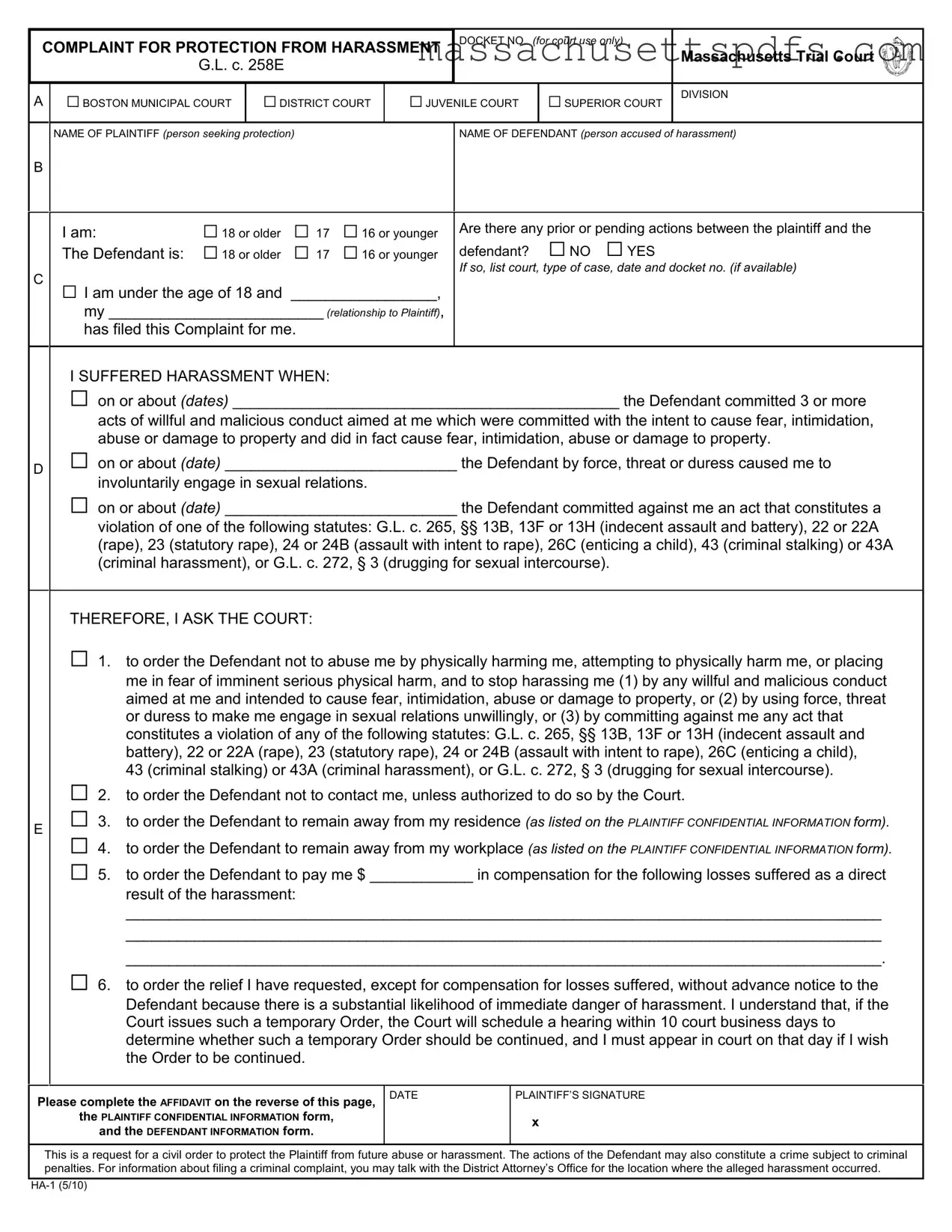Official Massachusetts Protection Harassment Template
The Massachusetts Protection Harassment form is a legal document that allows individuals who have experienced harassment to request a court order for protection. This form is essential for initiating a Harassment Prevention Order under Massachusetts General Laws chapter 258E. Completing this form can help safeguard individuals from further harassment or abuse.
To take action, fill out the form by clicking the button below.
Launch Editor Here
